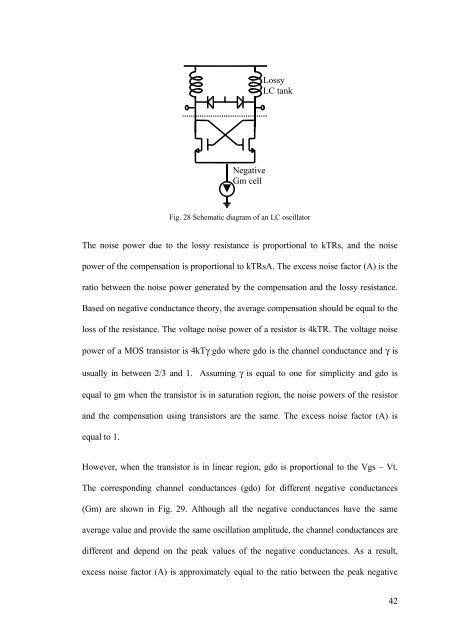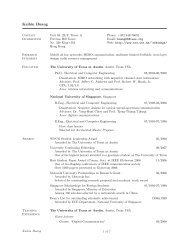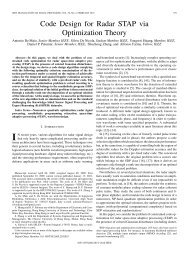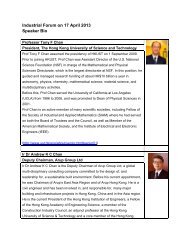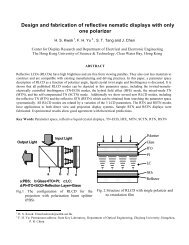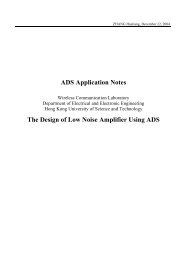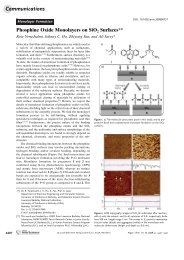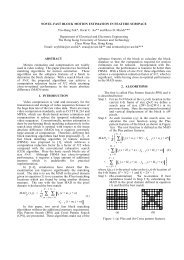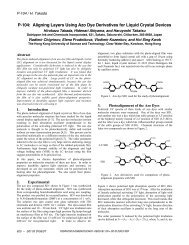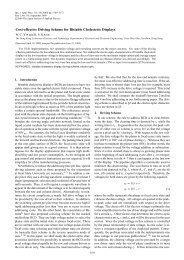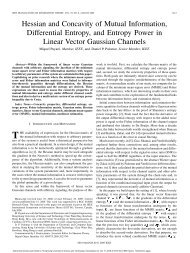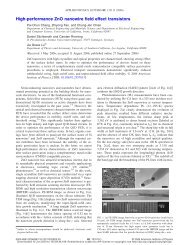MPhil thesis of Lo Chi Wa - Department of Electronic & Computer ...
MPhil thesis of Lo Chi Wa - Department of Electronic & Computer ...
MPhil thesis of Lo Chi Wa - Department of Electronic & Computer ...
You also want an ePaper? Increase the reach of your titles
YUMPU automatically turns print PDFs into web optimized ePapers that Google loves.
<strong>Lo</strong>ssyLC tankNegativeGm cellFig. 28 Schematic diagram <strong>of</strong> an LC oscillatorThe noise power due to the lossy resistance is proportional to kTRs, and the noisepower <strong>of</strong> the compensation is proportional to kTRsA. The excess noise factor (A) is theratio between the noise power generated by the compensation and the lossy resistance.Based on negative conductance theory, the average compensation should be equal to theloss <strong>of</strong> the resistance. The voltage noise power <strong>of</strong> a resistor is 4kTR. The voltage noisepower <strong>of</strong> a MOS transistor is 4kTγ gdo where gdo is the channel conductance and γ isusually in between 2/3 and 1. Assuming γ is equal to one for simplicity and gdo isequal to gm when the transistor is in saturation region, the noise powers <strong>of</strong> the resistorand the compensation using transistors are the same. The excess noise factor (A) isequal to 1.However, when the transistor is in linear region, gdo is proportional to the Vgs – Vt.The corresponding channel conductances (gdo) for different negative conductances(Gm) are shown in Fig. 29. Although all the negative conductances have the sameaverage value and provide the same oscillation amplitude, the channel conductances aredifferent and depend on the peak values <strong>of</strong> the negative conductances. As a result,excess noise factor (A) is approximately equal to the ratio between the peak negative42


